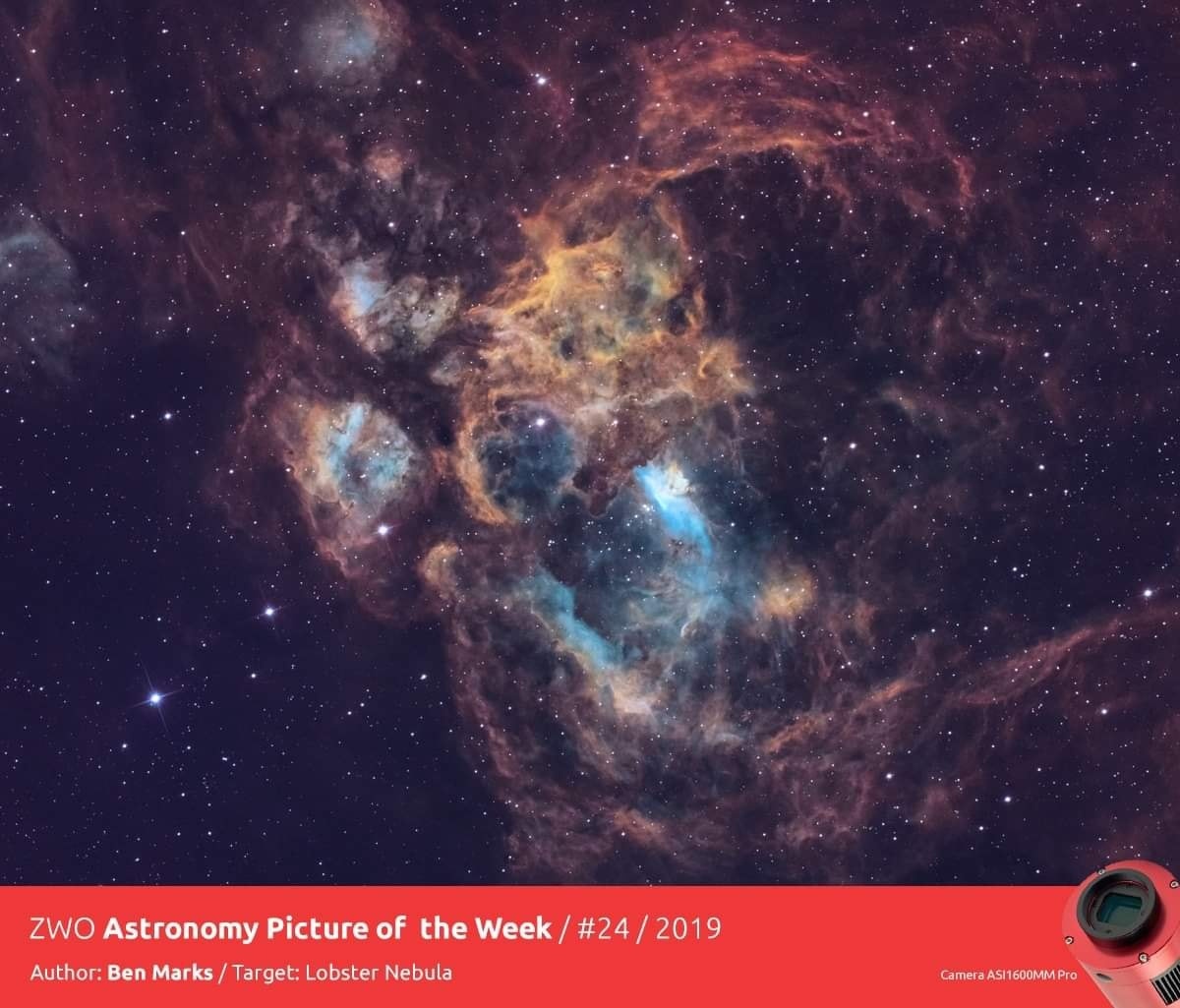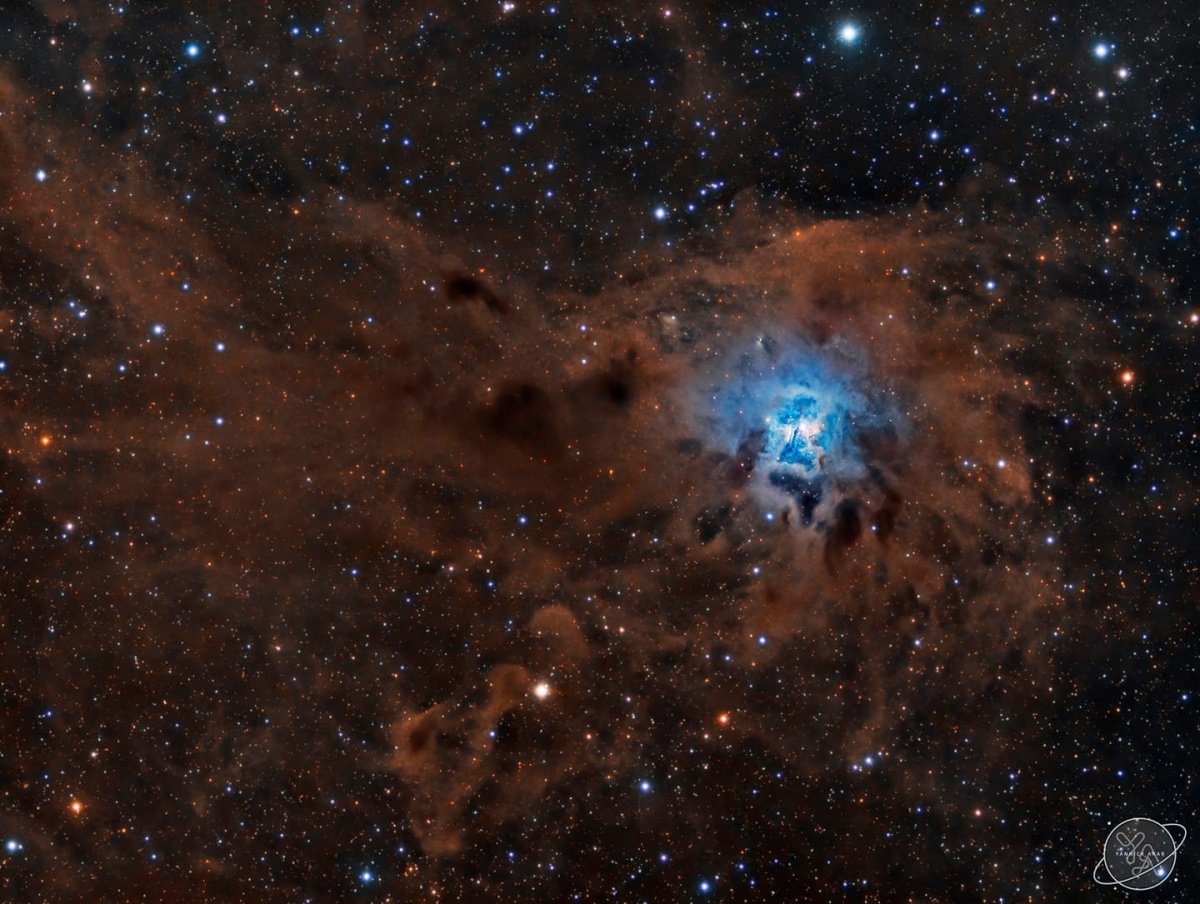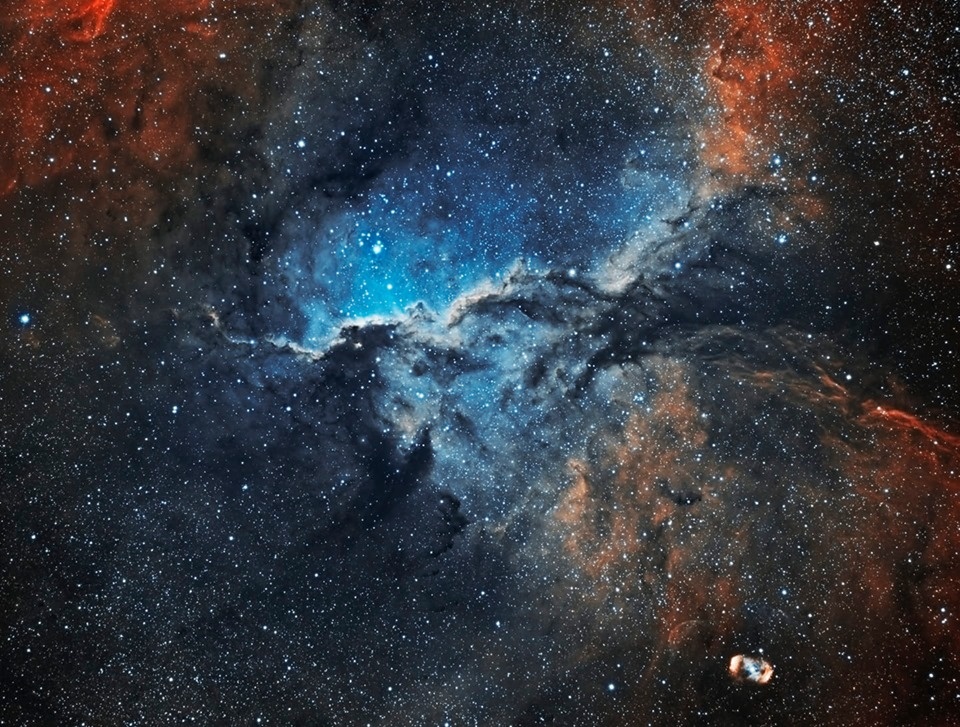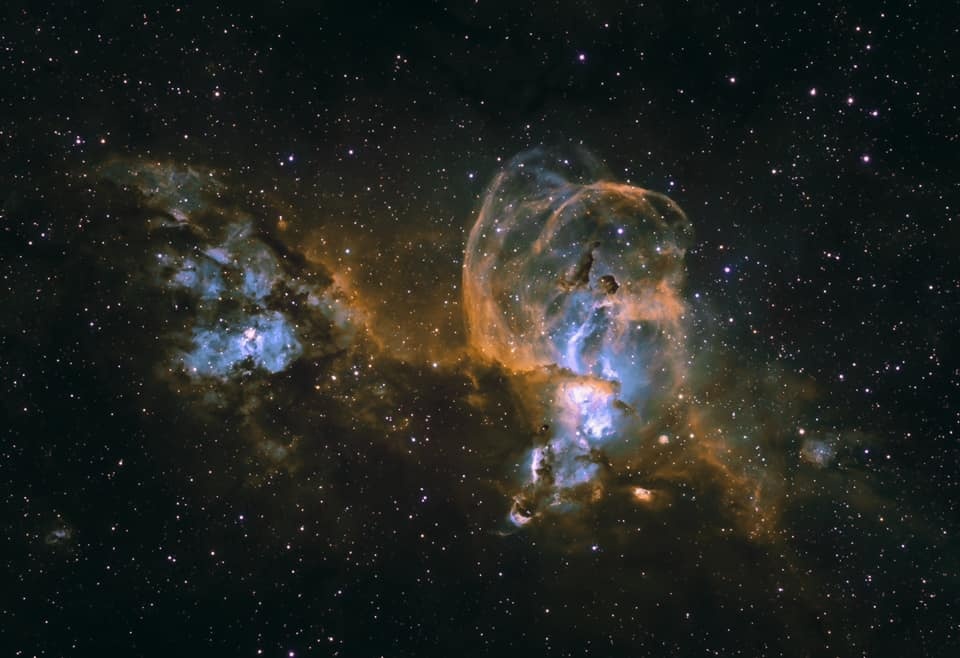Here come the works from the 24th edition of 2019 ASIWEEK ASTROPHOTOGRAPHY COMPETITION. All works are brilliant, let’s take a look now!
Just to satisfy your curiosity, it is Ben Marks and his image NGC 6357(also known as the Lobster Nebula) captured with ASI1600MM Pro that won the championship.
Photographer: Ben Marks
Target: NGC 6357

Equipment: ZWO #ASI1600MM Pro, Sky-Watcher Quattro 200 CF, Sky-Watcher EQ6-R Pro
NGC 6357 is a diffuse nebula near NGC 6334 in the constellation Scorpius. The nebula contains many proto-stars shielded by dark disks of gas, and young stars wrapped in expanding “cocoons” or expanding gases surrounding these small stars.
Entries from other photographers:
Photographer: Yan Nick
Target: NGC 7023(also known as the Iris Nebula)

Equipment: ZWO ASI1600 MM Pro, Explore Scientific ED102 CF
NGC 7023, is a bright reflection nebula and Caldwell object in the constellation Cepheus. NGC 7023 is actually the cluster within the nebula, LBN 487, and the nebula is lit by a magnitude +7 star, SAO 19158. It shines at magnitude +6.8. It is located near the Mira-type variable star T Cephei, and near the bright magnitude +3.23 variable star Beta Cephei (Alphirk). It lies 1,300 light-years away and is six light-years across.
Photographer: Yan Nick
Target: Jupiter
Equipment: ZWO #ASI224MC, C14
Jupiter is very bright and easy to observe. When Galileo observed space, he could see Jupiter with a simple self-made 32-fold telescope. I still remember the first time I observe Jupiter, It shocked me so much. It’s so beautiful that I will never forget it in my whole life.
Photographer: Ariel Cappelletti
Target:NGC 6188 and NGC 6164

Equipment: ZWO ASI1600MM Pro, Long Perng S400G (66/400 F6 Apo doublet), LP Field Flattener, EQ6-R-Pro
NGC 6188, lies about 4,000 light-years away. The emission nebula is found near the edge of a large molecular cloud unseen at visible wavelengths, in the southern constellation Ara.
On this image there is another emission nebula – NGC 6164, also created by one of the region’s massive O-type stars. Similar in appearance to many planetary nebulae, NGC 6164’s striking, symmetric gaseous shroud and faint halo surround its bright central star near the bottom edge. The impressively wide field of view spans over 3 degrees (six full Moons), corresponding to over 200 light years at the estimated distance of NGC 6188.
Photographer: Brendan Chen
Target:NGC 3576(a minor emission nebula from Carina Nebula)

Equipment: ZWO ASI1600MM-Cool
NGC 3576 is a minor nebula in the Sagittarius arm of the galaxy a few thousand light-years away from the Eta Carinae nebula. This nebula even received six different classification numbers. Currently, astronomers call the entire nebula NGC 3576. A popular nickname is “The Statue of Liberty Nebula” because of the distinctive shape in the middle of the nebula. The name was first suggested in 2009 by Dr. Steve Mazlin, a member of Star Shadows Remote Observatory (SSRO).
Find us on Facebook if you want to see more delicate astronomical images.
Facebook Page: https://buff.ly/2GN9ASW
Facebook Group: https://buff.ly/31fh49c


